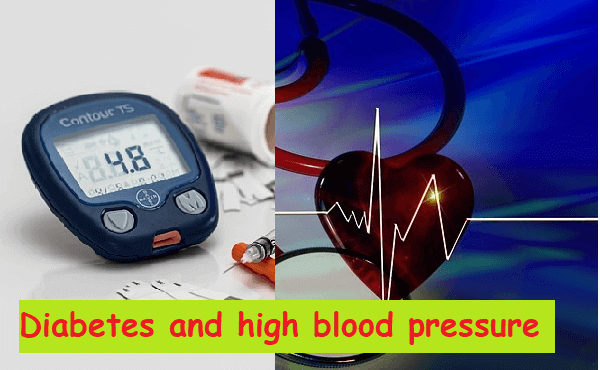
Diabetes and High Blood Pressure: Relationship, Diet, and How To Treat It – Perhaps you are wondering what is the relationship between diabetes with hypertension, which is characterized by blood tension above 140/90 mmHG. But in fact, these two diseases are closely interconnected, and may appear simultaneously on one body. The presence of diabetes causes the hypertension to be difficult to treat, while high blood pressure makes the impact of diabetes more dangerous. Why are diabetes and hypertension usually occurring together? See explanation below.
Read also: Sudden High Blood Pressure: The Causes and First Aid.
Why diabetes and High Blood Pressure can appear together?
High blood sugar is a source of a wide range of chronic diseases, including hypertension. If you suffer from diabetes and you do not control your disease, you are more likely to experience high blood pressure. Why?
Diabetes continues to be left without treatment long-time, causing damage to blood vessels and increased fat buildup on the walls of blood vessels. This fat buildup can increase the risk of blood vessels narrowed because it is clogged until it eventually hardens. This condition is called atherosclerosis. Strong blood flow from the heart is obstructed because not all of it can pass through narrow blood vessels. As a result, the heart should work even harder to pump blood. This is what causes blood pressure to increase after a long time if you have diabetes.
The effect of insulin resistance due to diabetes itself can also cause hypertension.
Insulin resistance makes the body does not respond to insulin hormones well, so it fails to absorb sugars in the blood (glucose) to be used as energy or fat deposits. This condition results in increased body fat. The buildup of fat in the body can interfere with the nervous system work, including signals regulating blood pressure.
In addition, insulin resistance triggers an imbalance of salt and potassium levels, which causes an increase in body fluid volume. It can also cause narrowing of the arteries, which longer increases blood pressure to the risk of hypertension.
Diet for diabetes and high blood pressure
Diabetes and hypertension are generally caused by an unhealthy diet. Two out of three people with even known diabetes also have high blood pressure. If you’re one of those who have both of these ailments, or both, don’t worry. You can still eat well while still maintaining the health of your body.
Increase fiber intake.
Diabetes and hypertension diet should be enriched with high fiber food menu. Fibers are not easily digested in the body so it launches the digestive system without causing an increase in blood sugar. This is why high fiber foods can generally help lower / stabilize blood sugar, prevent constipation, lower cholesterol, and overcome various digestive problems.
Fibers are found in vegetable foods such as fruits, vegetables, and grains. Then do not forget to always add fiber intake into the food that you consume daily. For grain, your target is to eat three to five servings every day, and at least half of the grain portion is whole grain.
Other tips

- Using Good seasoning.
- Arranging the contents of the dishes.
- Limit coffee.
- The importance of potassium intake.
- Reduce alco**hol.
- Avoid foods high in fat.
- You can eat unhealthy, but small portions.
Read also: 15 Low Blood Pressure Diet Tips.
How to treat diabetes and high blood pressure
Treating high blood in diabetic patients can be started by improving the lifestyle to be healthier. Weight loss If you have excess weight, become physically active with exercise routine at least 30 minutes, and pay attention to the nutrient content that enters the body is the initial steps in the management of Diabetic hypertension.
Consume foods that contain a lot of fiber and high in protein. Pay attention to the intake of carbohydrates that enter the body to maintain blood sugar. The treatment of high blood through natural ways without drugs, such as low salt diets, sports, and alco**hol drinking restrictions proved to be significantly capable of maintaining blood pressure to remain within normal limits.
Long-term strict blood sugar control in patients with type two diabetes proved to decrease the possibility of complications associated with diabetes, including microvascular complications. Controlling blood pressure in a disciplined manner can also be done by diabetics not only to avoid microvascular complications, but also macrovascular complications.
Read also: Chlorthalidone 25 mg: Usage, How It Works, Dosage, and Side Effects.
Diabetes is a disease caused by lifestyle, especially type two diabetes. By restoring a healthy lifestyle, blood sugar can become controlled and other diseases can also be prevented.




